Related Research Articles

Friction is the force resisting the relative motion of solid surfaces, fluid layers, and material elements sliding against each other. There are several types of friction:
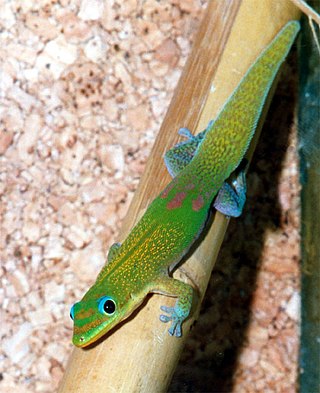
Geckos are small, mostly carnivorous lizards that have a wide distribution, found on every continent except Antarctica. Belonging to the infraorder Gekkota, geckos are found in warm climates throughout the world. They range from 1.6 to 60 centimetres.
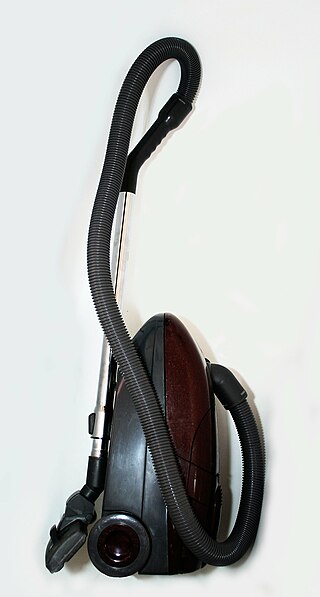
A vacuum cleaner, also known simply as a vacuum or a hoover, is a device that causes suction in order to remove dirt from floors, upholstery, draperies, and other surfaces. It is generally electrically driven.

In fluid dynamics, the drag coefficient is a dimensionless quantity that is used to quantify the drag or resistance of an object in a fluid environment, such as air or water. It is used in the drag equation in which a lower drag coefficient indicates the object will have less aerodynamic or hydrodynamic drag. The drag coefficient is always associated with a particular surface area.
In biology, setae are any of a number of different bristle- or hair-like structures on living organisms.

Parasitic drag, also known as profile drag, is a type of aerodynamic drag that acts on any object when the object is moving through a fluid. Parasitic drag is a combination of form drag and skin friction drag. It affects all objects regardless of whether they are capable of generating lift.
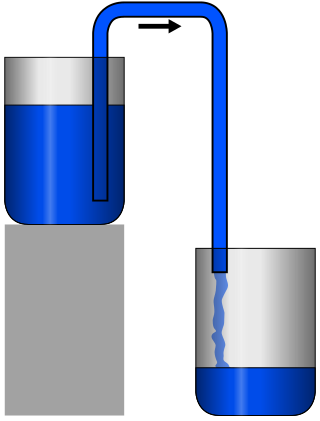
A siphon is any of a wide variety of devices that involve the flow of liquids through tubes. In a narrower sense, the word refers particularly to a tube in an inverted "U" shape, which causes a liquid to flow upward, above the surface of a reservoir, with no pump, but powered by the fall of the liquid as it flows down the tube under the pull of gravity, then discharging at a level lower than the surface of the reservoir from which it came.

Adhesion is the tendency of dissimilar particles or surfaces to cling to one another.
A fly-killing device is used for pest control of flying insects, such as houseflies, wasps, moths, gnats, and mosquitoes.
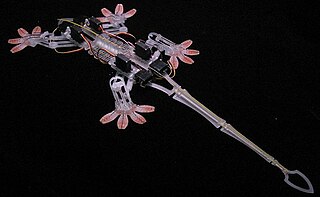
Synthetic setae emulate the setae found on the toes of a gecko and scientific research in this area is driven towards the development of dry adhesives. Geckos have no difficulty mastering vertical walls and are apparently capable of adhering themselves to just about any surface. The five-toed feet of a gecko are covered with elastic hairs called setae and the ends of these hairs are split into nanoscale structures called spatulae. The sheer abundance and proximity to the surface of these spatulae make it sufficient for van der Waals forces alone to provide the required adhesive strength. Following the discovery of the gecko's adhesion mechanism in 2002, which is based on van der Waals forces, biomimetic adhesives have become the topic of a major research effort. These developments are poised to yield families of novel adhesive materials with superior properties which are likely to find uses in industries ranging from defense and nanotechnology to healthcare and sport.

A suction cup, also known as a sucker, is a device or object that uses the negative fluid pressure of air or water to adhere to nonporous surfaces, creating a partial vacuum.

Pressure-sensitive adhesive is a type of nonreactive adhesive which forms a bond when pressure is applied to bond the adhesive with a surface. No solvent, water, or heat is needed to activate the adhesive. It is used in pressure-sensitive tapes, labels, glue dots, stickers, sticky note pads, automobile trim, and a wide variety of other products.

The Pulsometer steam pump is a pistonless pump which was patented in 1872 by American Charles Henry Hall. In 1875 a British engineer bought the patent rights of the Pulsometer and it was introduced to the market soon thereafter. The invention was inspired by the Savery steam pump invented by Thomas Savery. Around the turn of the century, it was a popular and effective pump for quarry pumping.

Flexible suction hose, not to be confused with hard suction hose in U.S., is a specific type of fire hose used in drafting operations, when a fire engine uses a vacuum to draw water from a portable water tank, pool, or other static water source. It is built to withstand vacuum, rather than pressure, abrasion, and heat. Conversely, hard suction is capable of withstanding up to 200 PSIG, as well as vacuum. In the United States, it is standard equipment according to the National Fire Protection Association standards for fire engines. It is used in both structural and wildland firefighting throughout the world, and is made in various diameters and connection types.
In robotics, an end effector is the device at the end of a robotic arm, designed to interact with the environment. The exact nature of this device depends on the application of the robot.

Pressure-sensitive tape, known also in various countries as PSA tape, adhesive tape, self-stick tape, sticky tape, Sellotape, or just tape, is an adhesive tape that will stick with application of pressure, without the need for a solvent or heat for activation.

Arthropods, including insects and spiders, make use of smooth adhesive pads as well as hairy pads for climbing and locomotion along non-horizontal surfaces. Both types of pads in insects make use of liquid secretions and are considered 'wet'. Dry adhesive mechanisms primarily rely on Van der Waals' forces and are also used by organisms other than insects. The fluid provides capillary and viscous adhesion and appears to be present in all insect adhesive pads. Little is known about the chemical properties of the adhesive fluids and the ultrastructure of the fluid-producing cells is currently not extensively studied. Additionally, both hairy and smooth types of adhesion have evolved separately numerous times in insects. Few comparative studies between the two types of adhesion mechanisms have been done and there is a lack of information regarding the forces that can be supported by these systems in insects. Additionally, tree frogs and some mammals such as the arboreal possum and bats also make use of smooth adhesive pads. The use of adhesive pads for locomotion across non-horizontal surfaces is a trait that evolved separately in different species, making it an example of convergent evolution. The power of adhesion allows these organisms to be able to climb on almost any substance.
Sticky pads are friction devices used to prevent objects from sliding on a surface, by effectively increasing the friction between the object and the surface.
The self-sealing suction cup is a suction cup that exerts a suction force only when it is in physical contact with an object. Unlike most other suction cups, it does not exert any suction force when it is not in contact with an object. Its grasping ability is achieved entirely through passive means without the use of sensors, valves, or actuators.
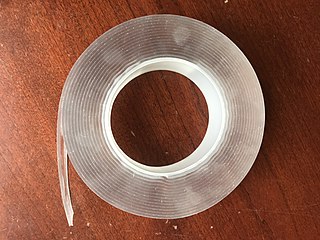
Nano tape, also called gecko tape; marketed under the name Alien Tape, is a synthetic adhesive tape consisting of arrays of carbon nanotubes transferred onto a backing material of flexible polymer tape. These arrays are called synthetic setae and mimic the nanostructures found on the toes of a gecko; this is an example of biomimicry. The adhesion is achieved not with chemical adhesives, but via van der Waals forces, which are weak electric forces generated between two atoms or molecules that are very close to each other.
References
- 1 2 Ozcanli, Osman Can (March 16, 2010). "Looking For The Next Post-It". Forbes. Archived from the original on 2017-09-08. Retrieved 2017-09-02.
- ↑ Trent Crawford. "Microsuction: The Tape of the Future". Swell Direct. Archived from the original on 2017-09-02. Retrieved 2017-09-02.
- ↑ James Burchill. "Micro-Suction Tape". Material Intuition. Archived from the original on 2017-09-03. Retrieved 2017-09-02.
- ↑ Mena R. Klittich, Michael C. Wilson, Craig Bernard, Rochelle M. Rodrigo, Austin J. Keith, Peter H. Niewiarowski & Ali Dhinojwala (13 March 2017). "Influence of substrate modulus on gecko adhesion". Scientific Reports. Nature. 7: 43647. Bibcode:2017NatSR...743647K. doi:10.1038/srep43647. PMC 5347379 . PMID 28287647.
{{cite journal}}: CS1 maint: multiple names: authors list (link) - ↑ Quan Xu, Yiyang Wan, Travis Shihao Hu, Tony X. Liu, Dashuai Tao, Peter H. Niewiarowski, Yu Tian, Yue Liu, Liming Dai, Yanqing Yang & Zhenhai Xia (20 November 2015). "Robust self-cleaning and micromanipulation capabilities of gecko spatulae and their bio-mimics". Nature Communications. 6. doi:10.1038/ncomms9949. PMC 4673831 . PMID 26584513. S2CID 15811597. Archived from the original on 2017-09-05. Retrieved 2017-09-05.
{{cite journal}}: CS1 maint: multiple names: authors list (link) - ↑ "Gecko Tape". University of Stanford. Archived from the original on 2017-09-05. Retrieved 2017-09-05.
- ↑ "How stick insects honed friction to grip without sticking". Phys.org News. Phys.org. February 19, 2014. Archived from the original on 2017-09-05. Retrieved 2017-09-05.
- ↑ "Frog feet could solve a sticky problem". Phys.org News. Phys.org. July 3, 2011. Retrieved 2017-09-05.
- ↑ Marlene Spinner, Guido Westhoff and Stanislav N. Gorb (2014). "Subdigital setae of chameleon feet: Friction-enhancing microstructures for a wide range of substrate roughness". Scientific Reports. Nature. 4: 5481. Bibcode:2014NatSR...4E5481S. doi:10.1038/srep05481. PMC 4073164 . PMID 24970387. S2CID 659343. Archived from the original on 2017-09-05. Retrieved 2017-09-05.